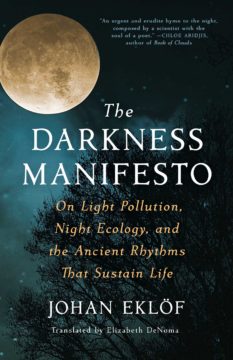Month: February 2023
A juicy new legal filing reveals who really controls Fox News
Andrew Prokop in Vox:
 The way Dominion’s attorneys tell the story, the problem really started when, late on election night, Fox News’s decision desk called the state of Arizona for Joe Biden — and no other networks joined them. The Fox call was consequential, seriously undercutting Trump’s hope of portraying the election outcome as genuinely in question. It also was, probably, premature. The consensus among other decision desks and election wonks was that Fox called the state too quickly, considering how much of the vote remained uncounted and where and whom those uncounted votes were coming from. Other outlets left Arizona uncalled for more than a week as counting continued, and Biden’s lead shrank there. Biden eventually won the state by a mere 0.3 percent margin.
The way Dominion’s attorneys tell the story, the problem really started when, late on election night, Fox News’s decision desk called the state of Arizona for Joe Biden — and no other networks joined them. The Fox call was consequential, seriously undercutting Trump’s hope of portraying the election outcome as genuinely in question. It also was, probably, premature. The consensus among other decision desks and election wonks was that Fox called the state too quickly, considering how much of the vote remained uncounted and where and whom those uncounted votes were coming from. Other outlets left Arizona uncalled for more than a week as counting continued, and Biden’s lead shrank there. Biden eventually won the state by a mere 0.3 percent margin.
But the Fox personalities’ real concern was not so much with the facts or technical details of election wonkery as with the optics. In getting out on a limb and calling Arizona for Biden when no one else was doing so, it appeared to Fox’s pro-Trump viewers like the network was shivving Trump. “We worked really hard to build what we have. Those fuckers [at the decision desk] are destroying our credibility. It enrages me,” Fox News host Tucker Carlson wrote to his producer on November 5. He went on to say that what Trump is good at is “destroying things,” adding, “He could easily destroy us if we play it wrong.”
On November 7, Carlson again wrote to his producer when Fox called Biden as the winner nationally (this time, alongside the other major networks). “Do the executives understand how much credibility and trust we’ve lost with our audience? We’re playing with fire, for real,” he wrote.
The fear of alienating the audience was particularly acute because another conservative cable network with a more conspiratorial bent, Newsmax, was covering Trump’s stolen election claims far more uncritically. “An alternative like newsmax could be devastating to us,” Carlson continued.
Fox News anchor Dana Perino wrote to a Republican strategist about “this RAGING issue about fox losing tons of viewers and many watching — get this — newsmax! Our viewers are so mad about the election calls…” And Fox News CEO Suzanne Scott told another executive that the political team did not understand “the impact to the brand and the arrogance in calling AZ.”
More here.
The 1619 Project and the Long Battle Over U.S. History
Jake Silverstein in The New York Times:
 On Jan. 28, 2019, Nikole Hannah-Jones, who has been a staff writer at The New York Times Magazine since 2015, came to one of our weekly ideas meetings with a very big idea. My notes from the meeting simply say, “NIKOLE: special issue on the 400th anniversary of African slaves coming to U.S.,” a milestone that was approaching that August. This wasn’t the first time Nikole had brought up 1619. As an investigative journalist who often focuses on racial inequalities in education, Nikole has frequently turned to history to explain the present. Sometimes, reading a draft of one of her articles, I’d ask if she might include even more history, to which she would remark that if I gave her more space, she would be happy to take it all the way back to 1619. This was a running joke, but it was also a reflection of how Nikole had been cultivating the idea for what became the 1619 Project for many years. Following that January meeting, she led an editorial process that over the next six months developed the idea into a special issue of the magazine, a special section of the newspaper and a multiepisode podcast series. Next week we are publishing a book that expands on the magazine issue and represents the fullest expression of her idea to date.
On Jan. 28, 2019, Nikole Hannah-Jones, who has been a staff writer at The New York Times Magazine since 2015, came to one of our weekly ideas meetings with a very big idea. My notes from the meeting simply say, “NIKOLE: special issue on the 400th anniversary of African slaves coming to U.S.,” a milestone that was approaching that August. This wasn’t the first time Nikole had brought up 1619. As an investigative journalist who often focuses on racial inequalities in education, Nikole has frequently turned to history to explain the present. Sometimes, reading a draft of one of her articles, I’d ask if she might include even more history, to which she would remark that if I gave her more space, she would be happy to take it all the way back to 1619. This was a running joke, but it was also a reflection of how Nikole had been cultivating the idea for what became the 1619 Project for many years. Following that January meeting, she led an editorial process that over the next six months developed the idea into a special issue of the magazine, a special section of the newspaper and a multiepisode podcast series. Next week we are publishing a book that expands on the magazine issue and represents the fullest expression of her idea to date.
This book, which is called “The 1619 Project: A New Origin Story,” arrives amid a prolonged debate over the version of the project we published two years ago. That project made a bold claim, which remains the central idea of the book: that the moment in August 1619 when the first enslaved Africans arrived in the English colonies that would become the United States could, in a sense, be considered the country’s origin.
More here. (Note: Throughout February, at least one post will be dedicated to Black History Month. The theme for 2023 is Black Resistance. Please send us anything you think is relevant for inclusion)
Securitizing the Transition
 Advait Arun in Phenomenal World’s The Polycrisis:
Advait Arun in Phenomenal World’s The Polycrisis:
In the eyes of the IMF, a G20 panel, and, lately, the US Treasury Secretary, the time has come for multilateral development banks to adapt their development mandates to the logic of derisking. This tactic—lauded as a solution for “mobilizing” the trillions necessary to achieve the green transition—demands that public entities shift private investors’ risks onto their own balance sheets, incentivizing investment to meet the world’s infrastructure needs.
Although development banks have floated serious plans to reorient themselves toward catalyzing private investment since the “billions to trillions” hype in 2016, such efforts never took off. The World Bank’s recently leaked “Evolution Roadmap” is its latest attempt to kickstart derisking at a global scale.
But the roadmap’s emphasis on mobilizing private finance through derisking obscures one proposal that on the surface appears to run the other direction. Securitization allows public entities and development banks to offload their assets to the private sector, thereby transferring risk away from themselves and freeing up their balance sheets for more immediate lending. To be sure, securitization still fits snugly within economist Daniela Gabor’s Wall Street Consensus, in which governments meet development goals by turning public services into investment opportunities for private finance. But while derisking calls for the public sector to shoulder additional risks, securitization calls for shrugging them off.
How would securitizing the World Bank’s portfolio work, and how does this tactic relate to the larger derisking turn in development finance? Is securitization a preferred alternative to derisking, or does it align with its broader logic?
More here.
The Blindness of Colorblindness
 Ira Katznelson in Boston Review:
Ira Katznelson in Boston Review:
First published in 2005, my book When Affirmative Action Was White answered a question Lyndon Johnson posed at Howard University’s graduation ceremony in June 1965: Why had the large gap between Black and white income and wealth at the end of World War II widened during two decades marked by dramatic economic growth and widespread prosperity?
The book told the story of sanctioned racism during and just after the Great Depression and World War II. During this period, master politicians from the South proudly protected their region’s entrenched white supremacy by passing landmark laws that made the great majority of Americans, the overwhelming white majority, more prosperous and more secure, while leaving out most African Americans, in full or in part. Ever since, many persons left behind have continued to experience deep poverty, together with social and spatial isolation.
The book’s account of blatant discrimination has been challenged in the seventeen years since it appeared. Two lines of argument are especially noteworthy. One questions whether domestics and farm laborers—critical categories of Black employment—were in fact kept out of Social Security for reasons of race. The second argues that the book underestimates the bounty of the GI Bill for Black Americans. Both objections deserve respectful review.
More here.
What Mark Blyth Got Wrong About Bidenomics and Climate Change
Burt Bacharach On Composing
The Darkness Manifesto
Lisa Abend at the NY Times:
 The zoologist Johan Eklöf began to consider the disappearance of darkness in our brightly lit world in 2015, when he was out counting bats in southern Sweden. The surrounding grounds were dark, as they had been decades earlier when his academic adviser had tallied the bat populations in the region’s churches. In the intervening years, however, those churches — whose belfries are famously appreciated by the winged mammals — had been illuminated with floodlights. “I started to think, how do the bats actually react to this?” Eklöf says.
The zoologist Johan Eklöf began to consider the disappearance of darkness in our brightly lit world in 2015, when he was out counting bats in southern Sweden. The surrounding grounds were dark, as they had been decades earlier when his academic adviser had tallied the bat populations in the region’s churches. In the intervening years, however, those churches — whose belfries are famously appreciated by the winged mammals — had been illuminated with floodlights. “I started to think, how do the bats actually react to this?” Eklöf says.
The short answer: Not well. Together with his adviser, Jens Rydell, Eklöf launched a new bat census and discovered that in 30 years — the average bat’s life span — fully half the area’s colonies had disappeared.
more here.
Mary Wollstonecraft’s Radical Ideas
Robert Zaretsky at The American Scholar:
 To vindicate indicates one of two aims: to make a defense or to stake a claim. With the Vindication of the Rights of Men, published in 1790, Wollstonecraft upheld the natural rights of man, a notion enthroned by the revolutionaries in their “Declaration of the Rights of Man,” embraced by Thomas Paine in his fiery pamphlet Rights of Man, and excoriated by Burke in his Reflections. Two years later, though, and to the shock of her critics, Wollstonecraft pivoted from defense to offense—in both senses of the word—by making a jaw-dropping claim. Natural rights, she declared, also belong to the other half of humankind: women. “I love man as my fellow,” she proclaimed in the Vindication of the Rights of Woman, “but his sceptre, real or usurped, extends not to me, unless the reason of an individual demands my homage.” Wollstonecraft was not alone in making so extraordinary a claim. The following year in France, the playwright Olympe de Gouges published her Declaration of the Rights of Woman. Demanding full civil and political rights for both sexes, de Gouges insisted that a woman’s place in the public square was side by side, as a full equal, to man.
To vindicate indicates one of two aims: to make a defense or to stake a claim. With the Vindication of the Rights of Men, published in 1790, Wollstonecraft upheld the natural rights of man, a notion enthroned by the revolutionaries in their “Declaration of the Rights of Man,” embraced by Thomas Paine in his fiery pamphlet Rights of Man, and excoriated by Burke in his Reflections. Two years later, though, and to the shock of her critics, Wollstonecraft pivoted from defense to offense—in both senses of the word—by making a jaw-dropping claim. Natural rights, she declared, also belong to the other half of humankind: women. “I love man as my fellow,” she proclaimed in the Vindication of the Rights of Woman, “but his sceptre, real or usurped, extends not to me, unless the reason of an individual demands my homage.” Wollstonecraft was not alone in making so extraordinary a claim. The following year in France, the playwright Olympe de Gouges published her Declaration of the Rights of Woman. Demanding full civil and political rights for both sexes, de Gouges insisted that a woman’s place in the public square was side by side, as a full equal, to man.
more here.
Following in MLK’s Footsteps Means Resisting Christian Nationalism
Nicholas Powers in Truthout:
 Martin Luther King Jr. yanked the burnt Ku Klux Klan Christian cross from his front lawn as his child looked on. It was 1960. Many Black families in Atlanta woke to charred crosses left as a warning to civil rights activists.
Martin Luther King Jr. yanked the burnt Ku Klux Klan Christian cross from his front lawn as his child looked on. It was 1960. Many Black families in Atlanta woke to charred crosses left as a warning to civil rights activists.
Sixty-one years later, a Christian nationalist group called Jericho’s Road stoked the January 6 insurrection with prayer vigils and marches. A right-wing mob waving flags emblazoned with “Jesus 2020” and “Jesus is My Savior” stormed the Capitol, armed and threatening to kill Democrats and Republicans. Outside, men prayed near a giant cross. A year after the January 6 attempted coup, the Christian far right is more isolated, extreme and preparing to strike again.
White Christian nationalists, the extreme fringe of the religious right, are increasingly turning to violence. They want to make Christianity the state religion, ban abortion, reinforce conservative gender roles and dramatically cut immigration to ensure a white majority. MLK Jr. endured attacks from racist evangelicals, using redemptive suffering and taking the moral high ground to unite a multiracial coalition, the Poor People’s Campaign. What worked for him then can work for us today.
More here. (Note: Throughout February, at least one post will be dedicated to Black History Month. The theme for 2023 is Black Resistance. Please send us anything you think is relevant for inclusion)
The Case for Free-Range Lab Mice
Sonia Shah in The New Yorker:
 The experiment that became known as the Elephant Man trial began one spring morning, in 2006, when clinicians at London’s Northwick Park Hospital infused six healthy young men with an experimental drug. Developers hoped to market TGN-1412, a genetically engineered monoclonal antibody, as a treatment for lymphocytic leukemia and rheumatoid arthritis, but they found that in just over an hour, the men grew restless. “They began tearing their shirts off complaining of fever,” one trial participant, who received a placebo, told a London tabloid. “Some screamed out that their heads were going to explode. After that they started fainting, vomiting and writhing around in their beds.” The heads of some of the subjects swelled to elephantine proportions. Within sixteen hours, all six were in the intensive-care unit suffering from multiple organ failure. They had narrowly survived a potentially fatal inflammatory response known as a cytokine storm.
The experiment that became known as the Elephant Man trial began one spring morning, in 2006, when clinicians at London’s Northwick Park Hospital infused six healthy young men with an experimental drug. Developers hoped to market TGN-1412, a genetically engineered monoclonal antibody, as a treatment for lymphocytic leukemia and rheumatoid arthritis, but they found that in just over an hour, the men grew restless. “They began tearing their shirts off complaining of fever,” one trial participant, who received a placebo, told a London tabloid. “Some screamed out that their heads were going to explode. After that they started fainting, vomiting and writhing around in their beds.” The heads of some of the subjects swelled to elephantine proportions. Within sixteen hours, all six were in the intensive-care unit suffering from multiple organ failure. They had narrowly survived a potentially fatal inflammatory response known as a cytokine storm.
The trial grabbed headlines and sent a “shock wave” through the scientific community, as one of the developers of the drug later wrote. A subsequent review found a few sloppy medical records and an underqualified physician associated with the study, but nothing that could explain a central mystery: the drug had already been tested on rodents and monkeys. Lab animals had tolerated doses that—after adjusting for the animals’ weights—were five hundred times greater than the ones that nearly killed the young men. Why did animal experiments fail to warn scientists that TGN-1412 was dangerous?
More here.
Saturday Poem
Kant, Last days
It is truly no evidence of a great soul
—O nature—
and if you aren’t magnanimous
it may be you don’t exist at all
Could you really not treat him to a sudden death
like a candle guttering
like a wig slipping off
like a ring’s short trip on a smooth tabletop
spinning and turning
at last standing still like a dead
beetle
Why these cruel games
with an old man
loss of memory
dull awakenings
nocturnal terror
wasn’t it he who said
“beware of bad dreams”
he who has a gray glacier on his head
a volcano where a pocket-watch should be
It is in terrible taste
to condemn a man
learning the trade of apparitions
suddenly to become
a ghost
by Zbigniew Herbert
from Poetry, January 2007
Poetry Magazine
How Hanif Kureishi gave me a voice
Kenan Malik in Pandaemonium:
 We had been messaging each other on Boxing Day, trying to fix a date for a drink. Then all went silent. I assumed that Hanif Kureishi was too busy enjoying himself in Rome. Only later did I discover that he had had a fall that had left him almost paralysed and in hospital.
We had been messaging each other on Boxing Day, trying to fix a date for a drink. Then all went silent. I assumed that Hanif Kureishi was too busy enjoying himself in Rome. Only later did I discover that he had had a fall that had left him almost paralysed and in hospital.
Kureishi’s hospital admission has made headlines around the world, not least because, incapacitated though he is, he has from his hospital bed produced a series of Twitter threads, collected on his Substack newsletter, a stream of consciousness about his condition at once poignant, profound, playful and laced with black humour. Unable to type, Kureishi FaceTimes his son Carlo, who writes out his thoughts before publishing them. Whatever his physical debilitation, Kureishi’s mind remains as sharp as ever.
For me, the shock of Kureishi’s incapacitation is not just that such a terrible misfortune should befall a friend. It is also that long before I knew him as a friend, I treasured Kureishi, like many of my generation of British Asians, as someone who helped us discover our voice and our place in an often hostile society.
More here.
Microsoft’s new AI really does herald a global threat
Erik Hoel in his Substack newsletter, The Intrinsic Perspective:
Now a third threat to humanity looms, one presciently predicted mostly by chain-smoking sci-fi writers: that of artificial general intelligence (AGI). AGI is only being worked on at a handful of companies, with the goal of creating digital agents capable of reasoning much like a human, and these models are already beating the average person on batteries of reasoning tests that include things like SAT questions, as well as regularly passing graduate exams:

It’s not a matter of debate anymore: AGI is here, even if it is in an extremely beta form with all sorts of caveats and limitations.
Due to the breakneck progress, the very people pushing it forward are no longer sanguine about the future of humanity as a species. Like Sam Altman, CEO of OpenAI (creators of ChatGPT) who said:
AI will probably most likely lead to the end of the world, but in the meantime, there’ll be great companies.
So it’ll kill us, but, you know, stock prices will soar. Which begs the question, how have tech companies handled this responsibility so far? Miserably. Because it’s obvious that recent AIs are not safe.
More here.
For the first time since its founding, protests have the Islamic Republic on the back foot
Masih Alinejad in Persuasion:
 Women’s rights in Iran saw significant progress toward gender equality as early as the 1920s. Women were allowed into the country’s first university in 1935. The Iranian Women’s Party was formed in 1942, and education for women became compulsory in 1944. Almost twenty years later, in 1963, women obtained the right to vote. The minimum age of marriage was raised from 13 to 18 and women could file for divorce. By the late 1970s, Iranian women made up a significant part of the country’s workforce and served in parliament and local councils. It was only the 1979 Iranian Revolution that brought the theocracy and regression of women’s rights.
Women’s rights in Iran saw significant progress toward gender equality as early as the 1920s. Women were allowed into the country’s first university in 1935. The Iranian Women’s Party was formed in 1942, and education for women became compulsory in 1944. Almost twenty years later, in 1963, women obtained the right to vote. The minimum age of marriage was raised from 13 to 18 and women could file for divorce. By the late 1970s, Iranian women made up a significant part of the country’s workforce and served in parliament and local councils. It was only the 1979 Iranian Revolution that brought the theocracy and regression of women’s rights.
But today, another revolution is underway.
More here.
Aladdin – A Whole New World (Mother/Son Duet)
The Post-Human Economy
Katherine Dee in Tablet:
 We’re supposedly on the brink of an artificial intelligence breakthrough. The bots are already communicating—at least they’re stringing together words and creating images. Some of those images are even kind of cool, especially if you’re into that sophomore dorm room surrealist aesthetic. GPT-3, and, more recently, chatGPT, two tools from OpenAI (which recently received a $29 billion valuation) are taking over the world. Each new piece about GPT-3 tells a different story of displacement: Gone are the halcyon days of students writing original essays, journalists doing original reporting, or advertisers creating original ad copy. What was once the domain of humans will now be relegated to bots. The next technological revolution is upon us, and it’s coming for creative labor.
We’re supposedly on the brink of an artificial intelligence breakthrough. The bots are already communicating—at least they’re stringing together words and creating images. Some of those images are even kind of cool, especially if you’re into that sophomore dorm room surrealist aesthetic. GPT-3, and, more recently, chatGPT, two tools from OpenAI (which recently received a $29 billion valuation) are taking over the world. Each new piece about GPT-3 tells a different story of displacement: Gone are the halcyon days of students writing original essays, journalists doing original reporting, or advertisers creating original ad copy. What was once the domain of humans will now be relegated to bots. The next technological revolution is upon us, and it’s coming for creative labor.
Timothy Shoup from the Copenhagen Institute for Future Studies seems confident that with chatGPT and GPT-3, the problem is about to get much worse, and that 99.9% of internet content will be AI-generated by 2030. The future, in other words, will be by bots and for bots. Estimates like this scare people because they’re couched in the language of science fiction: a dead internet that’s just AI-generated content and no people. But isn’t that a lot of what the internet is already? It’s not as though we don’t know this, either—we are all aware of not only bots but of the sea of bot-generated content that exists on every social media platform and in every Google search.
More here.
Who’s Afraid of Black History?
Henry Louis Gates Jr in The New York Times:
 Lurking behind the concerns of Ron DeSantis, the governor of Florida, over the content of a proposed high school course in African American Studies, is a long and complex series of debates about the role of slavery and race in American classrooms. “We believe in teaching kids facts and how to think, but we don’t believe they should have an agenda imposed on them,” Governor DeSantis said. He also decried what he called “indoctrination.”
Lurking behind the concerns of Ron DeSantis, the governor of Florida, over the content of a proposed high school course in African American Studies, is a long and complex series of debates about the role of slavery and race in American classrooms. “We believe in teaching kids facts and how to think, but we don’t believe they should have an agenda imposed on them,” Governor DeSantis said. He also decried what he called “indoctrination.”
School is one of the first places where society as a whole begins to shape our sense of what it means to be an American. It is in our schools that we learn how to become citizens, that we encounter the first civics lessons that either reinforce or counter the myths and fables we gleaned at home. Each day of first grade in my elementary school in Piedmont, W.Va., in 1956, began with the Pledge of Allegiance to the flag, followed by “America (My Country, ’Tis of Thee).” To this day, I cannot prevent my right hand from darting to my heart the minute I hear the words of either.
It is through such rituals, repeated over and over, that certain “truths” become second nature, “self-evident” as it were. It is how the foundations of our understanding of the history of our great nation are constructed.
More here. (Note: Throughout February, at least one post will be dedicated to Black History Month. The theme for 2023 is Black Resistance. Please send us anything you think is relevant for inclusion)
On Nicole Eisenman In The 1990s
Sarah Schulman at Artforum:
 THERE ARE HISTORICAL MOMENTS that transform the industry standard, and sometimes they have deep, traceable roots. An opportunity to understand this process is provided by an exhibition of artist Nicole Eisenman’s work opening in March at Munich’s Museum Brandhorst. Curated by Monika Bayer-Wermuth and Mark Godfrey, the show, especially its revisitation of startlingly explicit lesbian works from the 1990s, will allow viewers to enjoy Eisenman’s beautiful, widely appreciated, and highly valued artworks. The fifty-seven-year-old, French-born, New York–raised painter, sculptor, and creator of wild, passionate murals and drawings has taken a bad-boy, oppositional, and sometimes dramatically risky path to becoming one of the world’s most successful living artists. Somehow, the seas parted and—at times in spite of herself—Eisenman has thrived, has been approved of, and is now in some ways iconic. Beyond the quality of her work, how did it happen that exclusionary criteria that kept a range of lesbian imagery out of the mainstream were lifted?
THERE ARE HISTORICAL MOMENTS that transform the industry standard, and sometimes they have deep, traceable roots. An opportunity to understand this process is provided by an exhibition of artist Nicole Eisenman’s work opening in March at Munich’s Museum Brandhorst. Curated by Monika Bayer-Wermuth and Mark Godfrey, the show, especially its revisitation of startlingly explicit lesbian works from the 1990s, will allow viewers to enjoy Eisenman’s beautiful, widely appreciated, and highly valued artworks. The fifty-seven-year-old, French-born, New York–raised painter, sculptor, and creator of wild, passionate murals and drawings has taken a bad-boy, oppositional, and sometimes dramatically risky path to becoming one of the world’s most successful living artists. Somehow, the seas parted and—at times in spite of herself—Eisenman has thrived, has been approved of, and is now in some ways iconic. Beyond the quality of her work, how did it happen that exclusionary criteria that kept a range of lesbian imagery out of the mainstream were lifted?
more here.
